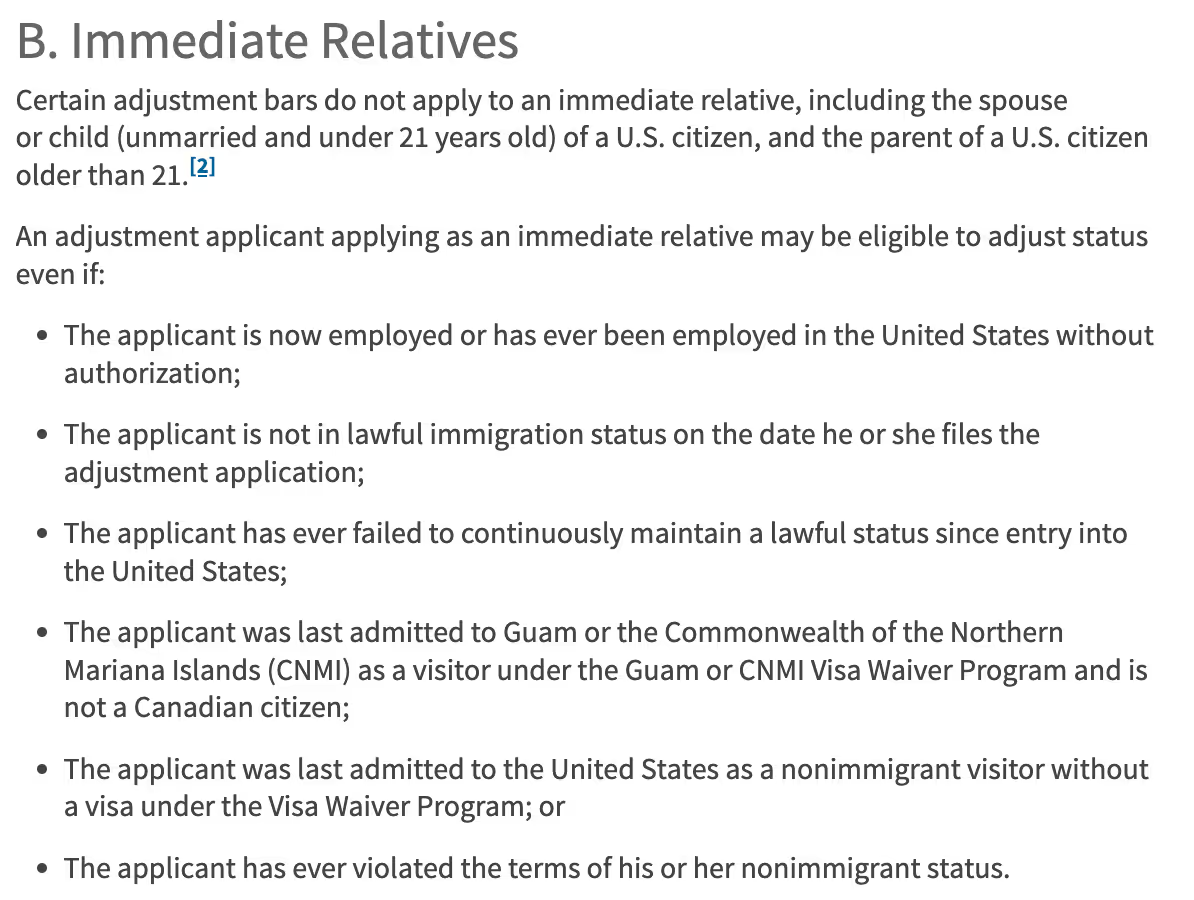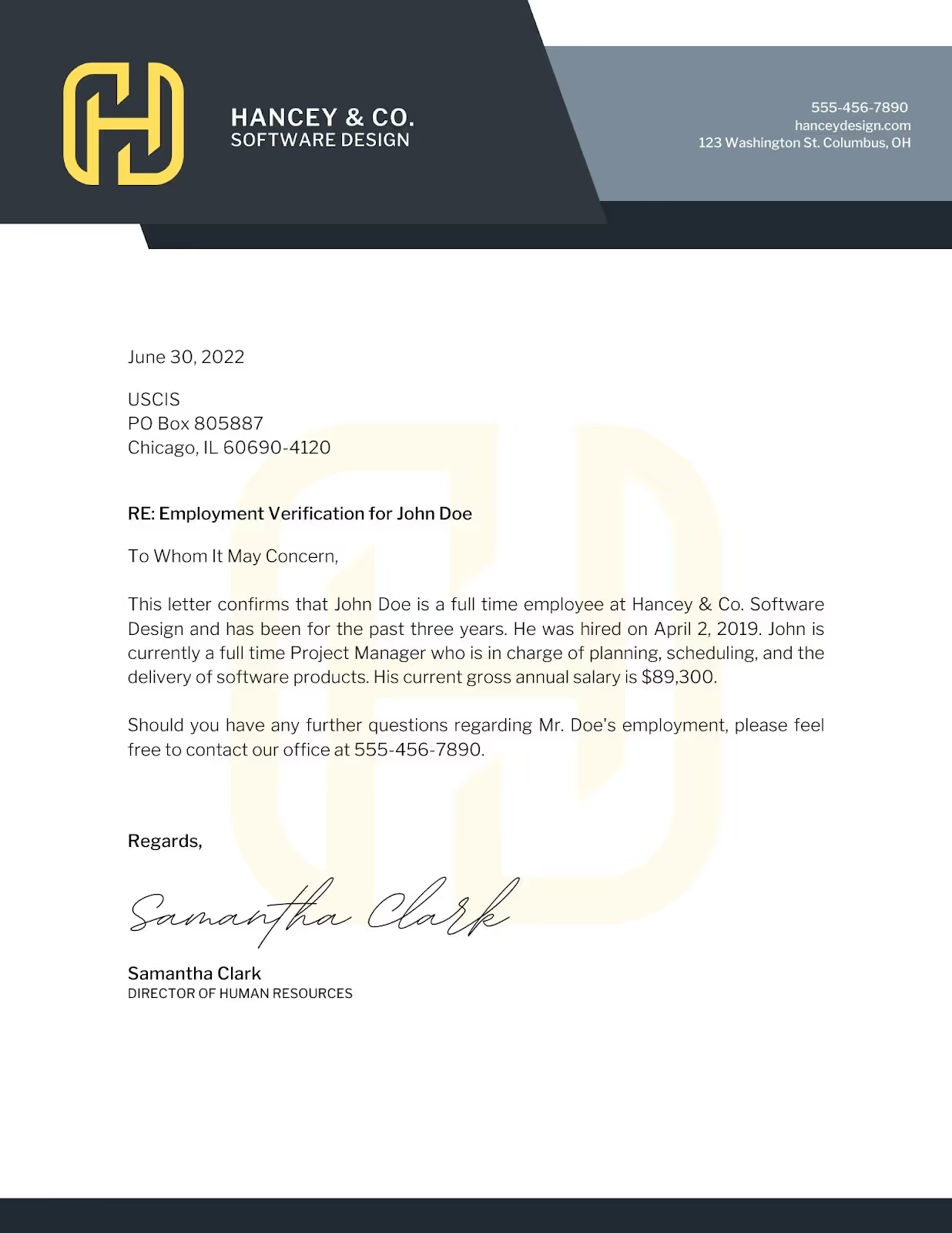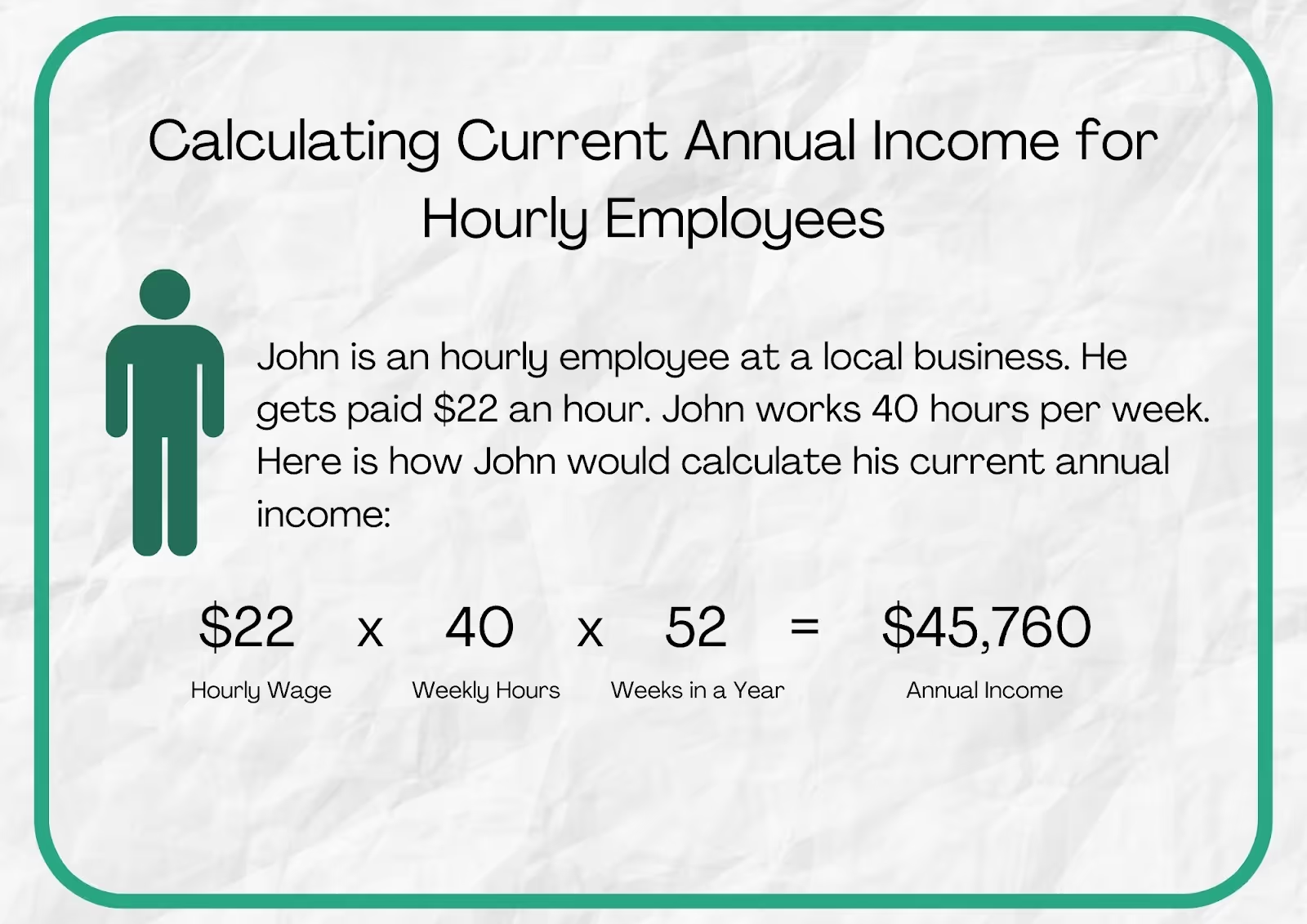Search Results
Filter by Topic
Form I-90
The timeline for filing Form I-90 depends on the reason for filing. Learn more about Form I-90 here.
USCIS Forms
What is Form I-90?
Form I-90, Application to Replace Permanent Resident Card (Green Card), is used to renew or replace Permanent Resident Cards. The Green Card is evidence of a person’s status as a Lawful Permanent Resident, and although an expired green card doesn’t always mean an individual’s status as a green card holder expires, the renewal of the Green Card is vital as evidence of that status for things such as work and travel. The Form I-90 is commonly used if a 10-year green card is expired or about to expire or if any green card needs to be replaced due to being lost, stolen, damaged, destroyed, etc.
Green Card Renewal:
The process to renew a green card via Form I-90 can begin six months before a green card expires. Renewing a green card is straightforward, allowing you to continue living and working in the United States without interruption. Individuals with 10-year green cards use this form use this application, and people with 2-year conditional green cards should not use it.
Green Card Replacement:
Whether a 2-year or 10-year green card is held, Form I-90 is used anytime a replacement card is needed due to a card being lost, stolen, a name change occurring, incorrect information on a green card, etc.
When to file Form I-90:
The timeline for filing Form I-90 will depend on the reason for filing.
For renewals of the green card, the application can be filed up to 6 months before the Green Card expiration.
For replacements of the green card, which can happen for various reasons, the application can be filed whenever a replacement is required.
Connected Forms:
Generally, this form is filed separately from other forms and doesn’t require any other forms to be filed simultaneously.
We’re happy you’re here!
SimpleCitizen is here to help you achieve the American dream. Safely and accurately apply, submit, & stay on top of your immigration status. Let SimpleCitizen guide you through filing Form I-90. With our easy-to-use platform and expert guidance, filing Form I-90 has never been simpler. Check your eligibility for Form I-90 with SimpleCitizen.
Learn more about what we do, our application assistance timeline, and what customers say about SimpleCitizen’s services.
Do you have a question about SimpleCitizen’s application packages? Let’s chat!
Connected Articles:
Understanding Which Green Card Renewal Process is Right For You
How to Renew a Missing Green Card
Green Card Renewal Form I-90 Filing Fee
What Happens After Filing Form I-90?
What is the Class of Admission on Form I-90?
Understanding Working Without Authorization
Understanding Working Without Authorization
General Immigration Information
The main goal of this article is to give you information about the risks and consequences of working in the United States without proper authorization. We will also explain some potential options for people in the United States working without authorization.
Working in the United States without proper authorization is generally not allowed, and people who are working without authorization or overstaying their visas may face serious consequences. However, some family members of US citizens seeking a green card through marriage may have certain exceptions or options. Please note that this article is not a substitute for legal advice. There are possible repercussions if you work in the United States without proper authorization. It is a good idea to talk to an immigration attorney or other qualified immigration professional to learn more about your options and the risks and consequences of your situation.
Authorization within the Context of USCIS Immigration
If you are planning to work in the United States, it’s essential to understand the concept of work authorization. Work authorization refers to the legal permit required for foreign nationals or non-citizens to work in the United States. Different types of visas offer different levels of employment authorization, so it’s essential to understand what kind of work you are allowed to do based on your visa type.
Authorized work is any work done with current, valid work authorization. Unauthorized work is any work done when someone does not have current, valid work authorization or work outside the scope of their work authorization. The US government grants work authorization through various visa programs, such as the H-1B program for skilled workers and the E-2 program for investors. If you are interested in working in the United States, it may be worth exploring these options to see if you are eligible.
For example, an F-1 visa and a J-1 visa are two types of visas that allow foreign nationals to come to the United States temporarily. They have different purposes and restrictions, though.
Take the time to learn about your specific work authorization and its privileges and restrictions.
Accepting Unlawful Employment while in the US
Accepting unlawful employment violates US immigration laws and can have severe consequences, including being barred from applying for a green card or permanent resident status. If someone is considering accepting unlawful employment in the United States, they can consult with an immigration attorney or other qualified immigration professional. They can help you understand the potential risks and consequences of this action and advise you on any possible options that may be available to you.
There are certain situations where USCIS may grant forgiveness for unauthorized employment. For example, the Violence Against Against Women Act (VAWA) protects specific individuals who have experienced abuse or violence at the hands of a US citizen, permanent resident spouse, or parent. Additionally, certain military service members and their families may be eligible for forgiveness for unauthorized employment.
If you are in the United States on a visa and have overstayed your visa, or if you have worked without authorization, you may be able to adjust your status to a lawful permanent resident (also known as getting a green card). However, this is not the case for all immigrants, as the eligibility to be forgiven for unauthorized work only applies to immediate family members of US citizens seeking a green card through marriage.
View the screenshot below for more information about these exceptions to the adjustment bars. Please click here to read more on the USCIS website.

Working Without Authorization
It is not legal to work in the United States without proper authorization. If you are in the United States on a nonimmigrant visa, such as a tourist visa, you are not allowed to work while you are in the country. If you are found to be working without authorization, you could face serious consequences, including deportation.
It is also important to note that specific programs may allow you to work in the United States legally, such as the H-1B visa program for skilled workers and the E-2 visa program for investors. If you are interested in working in the United States, it may be worth exploring these options to see if you are eligible.
If you are considering applying for a green card and have worked without authorization, keep in mind that failing to disclose this information or providing false information on your application can have severe consequences and may result in USCIS denying your application or your deportation.
It is also important to note that falsely claiming US citizenship or permanent residency to work is a severe violation of immigration laws and can have serious consequences. Suppose you have used false documents or made false claims to work. In that case, it is strongly advised that you consult with an immigration attorney or other qualified immigration professional as soon as possible. They can help you understand the potential risks and consequences of these actions and advise you on any potential options available.
Overall, it is vital to understand the legal requirements for employment in the United States and to follow the proper procedures to ensure that you can work legally. As previously discussed, some of these requirements can be visa-specific, meaning that you should ensure that you are familiar with the roles of your specific visa type.
SimpleCitizen can assist you and offer you peace of mind in adjusting your status or applying for a green card. Find out more here.
USCIS Update Alert: USCIS Updates Policy Guidance on Self-Selecting a Gender Marker on Forms and Documents
On March 31, 2023, USCIS updated its guidance on selecting gender markers on its forms and documents.
U.S. Immigration News
Published April 3, 2023
As of March 31, 2023, USCIS has updated its guidance on selecting gender markers on its forms and documents. Previously, individuals were required to indicate their gender based on their legal documents, but effective immediately, USCIS will allow individuals requesting immigration benefits to self-identify their gender marker. The selected gender will not be required to match the gender marker from their supporting documentation, and no additional documentation will be required. However, this does not apply to Form N-565, Application for Replacement Naturalization/Citizenship Document.
USCIS has indicated that currently, the only gender markers available are “Male” and “Female,” but The U.S. Department of Homeland Security (DHS) is actively working on adding an “X” marker “for another or unspecified gender identity.” Once that has been updated, USCIS will update its forms.
Employment Verification Letter (EVL) o Carta de Verificación de Empleo
¿Cuál es el propósito de una carta de verificación de empleo?
En Español
¿Cuál es el propósito de una carta de verificación de empleo?
Al pasar por el proceso de inmigración, es crucial demostrar a USCIS que el patrocinador, y cuando sea aplicable, el co-patrocinador (joint sponsor), cumplen con los requisitos financieros necesarios de acuerdo al número de personas que hay en su hogar. Además, el USCIS querrá ver una prueba de su situación laboral actual. Estas dos cosas se pueden probar a través de una carta de verificación de empleo (EVL). La carta de verificación de empleo proporciona pruebas tanto del empleo como de los ingresos actuales.
Tenga en cuenta que una carta de verificación de empleo es diferente de una carta de oferta. Una carta de oferta demuestra que se ofreció un empleo y una carta de verificación de empleo demuestra que el empleo está en curso.
La carta de verificación de empleo es necesaria al igual que las declaraciones de impuestos, los recibos de pago y otros documentos financieros. Su objetivo es reforzar el caso apoyando la afirmación del patrocinador de que es capaz de proporcionar un apoyo financiero adecuado al aplicante.
¿Quién necesita una carta de verificación de empleo?
El patrocinador y, en su caso, cualquier co-patrocinador en una aplicación de green card tendrá que proporcionar una carta de verificación de empleo. La carta será requerida como evidencia para el Formulario I-864.
Crear una carta de verificación de empleo:
¿Quién debe emitir una carta de verificación de empleo?
La carta de verificación de empleo debe ser emitida por el departamento de recursos humanos de la empresa o por el supervisor directo del patrocinador.
¿En qué tipo de papel debe estar la carta?
La carta debe llevar el membrete oficial de la empresa.
¿Qué información debe incluirse?
- La fecha en que el empleador escribe la carta. Lo ideal es que sea dentro de los 2-3 meses siguientes a la presentación de la aplicación.
- El nombre, la dirección de la empresa y el cargo de la persona que emite la carta.
- El cargo del empleado en la empresa.
- La fecha en que el empleado empezó a trabajar en la empresa.
- Una descripción de las responsabilidades del empleado.
- El salario anual (preferible) o el salario semanal y el promedio de horas semanales del empleado.
- La situación actual del empleado (medio tiempo/tiempo completo o promedio de horas trabajadas por semana).
- En la medida de lo posible, una declaración sobre el potencial de empleo en el futuro (es decir, una declaración en la que se diga que la empresa prevé que el empleado trabajará allí durante mucho tiempo).
- Firma del redactor (representante de Recursos Humanos o supervisor directo).
Ejemplo de carta de verificación de empleo:

Ejemplo de carta de verificación de empleo:
Si necesita ayuda para empezar, haga clic aquí para descargar una copia de nuestra plantilla de carta de verificación de empleo.
Preguntas frecuentes:
¿Qué pasa si soy empleado independiente?
Al realizar el proceso con SimpleCitizen, el sistema le permitirá seleccionar que es un trabajador independiente. A continuación, le hará una serie de preguntas sobre sus ingresos, la descripción de su trabajo y las fechas en las que ha trabajado como empleado independiente. Las respuestas a estas preguntas sustituirán la necesidad de una carta de verificación de empleo por una lista de nuevos documentos requeridos.
¿Qué pasa si tengo más de un trabajo?
Si tiene más de un empleo, tendrá que incluir una carta de verificación de empleo para cada uno de los empleos que tiene actualmente. A continuación, sumará los valores de los ingresos combinados en todos los formularios como ingresos anuales totales en el cuestionario.
Acabo de empezar a trabajar, ¿necesito una carta de verificación de empleo?
Si acaba de empezar su trabajo, añadir la carta de oferta original así como una verificación de empleo sería la mejor manera de ilustrar su empleo actual al USCIS. Es menos probable que USCIS acepte la documentación de un patrocinador como suficiente si comenzó el trabajo recientemente. Añadir una carta de verificación de empleo con una declaración sobre el potencial de empleo en el futuro (es decir, una declaración que diga que la empresa prevé que usted trabaje allí durante un tiempo prolongado) puede ayudar a mejorar sus probabilidades.
Tengo una carta de verificación de empleo de hace 5 meses. ¿Puedo presentarla junto con esa?
Dado que el objetivo general de la carta de verificación de empleo es demostrar que está empleado actualmente, debe asegurarse de que la carta sea lo más actual posible. Como recomendación, la carta debe tener una fecha que no exceda los 2 a 3 meses antes de la fecha de presentación de su aplicación.
¿Y si me pagan por hora?
Si le pagan por hora, deberá pedir al autor de la carta que añada su salario por hora y un promedio de horas trabajadas a la semana. Si su empleador no incluye un estimado de sus ingresos anuales en la carta, una recomendación sería subir también una carta de conversión firmada que muestre los cálculos utilizados para calcular sus ingresos anuales.
Cómo calcular los ingresos anuales:

Esquema de la carta de conversión:
“Date
Dear USCIS officer, as shown on the employment verification letter, my hourly pay is _X_ dollars an hour and I work an average of _X_ hours each week.
[hourly pay] x [avg weekly hours] x [52 weeks/year] = a calculated estimated annual salary of _X_.
Name
Signature”
Ejemplo de carta de conversión:

USCIS Update Alert: Proposal for Fee Increase for Certain Immigration and Naturalization Services
On Jan 3, 2023, USCIS proposed a fee increase, including increased pricing for many applications.
U.S. Immigration News
On Jan 3, 2023, USCIS proposed a fee increase, including increased pricing for many applications and petitions. The reason for these fee changes is that application fees fund the majority of USCIS's financial needs for operation. It has been announced that these proposed fee increases are meant to help USCIS “more fully recover its operating costs, reestablish and maintain timely case processing, and prevent the accumulation of future case backlogs.”
It is important to note that at this point, these increases are only in the proposal stage and are currently undergoing a 60-day comment period. During this time, the public can submit comments and feedback on the proposed fees. Following the comment period, USCIS will review the comments and make adjustments before finalizing the fee schedule.
How does this impact intending immigrants?
If approved, the proposed fee changes would significantly increase the cost of immigration for the majority of applicants.
Here is a list of some of the ways fees could change if this proposal is approved:
- The filing fee for Form I-130, Petition for Alien Relative, would increase from $535 to $820,
- The Filing fee for Form I-485, Application to Register Permanent Residence or Adjust Status, would increase from $1225 to $1540.
- USCIS would start requiring separate filing fees for Form I-131 and Form I-765 filings, even when filed concurrently with Form I-485.
- The reduced fees for children filing with parents would be done away with, increasing costs for families that adjust status together.
USCIS also proposes significant increases to fiance visa applications, removal of conditions applications, naturalization applications, and many other petitions and applications. For more information on all of the proposed changes, see USCIS’s FAQ page and the Proposed Rule.
Please note that this proposed rule intends on preserving the existing fee waiver eligibility for low-income and vulnerable populations. It also proposes the addition of new fee exemptions for certain humanitarian programs.
What is the USCIS timeline for the fee change?
The USCIS 60-day comment period began on January 4, 2023, and will end on March 6, 2023 (This comment period has now been extended to March 13th, 2023). After the period, they will still have to (1) finalize their updates based on the comments and (2) release the final information. While this finalization period can vary in length, the changes could go into effect anytime from April 2023 or beyond.
How can SimpleCitizen help you?
At SimpleCitizen, we understand that potential fee changes can add additional stress to the already stressful immigration process. While these fees have yet to be implemented and may change, they may significantly impact applications. Start your application today so you can have the peace of mind that no matter what fee increases occur, you have time to submit before their finalization!
USCIS Update Alert: USCIS Removes 60-Day Rule for Civil Surgeon Signatures on Form I-693
Medical exams will now only be subject to their 2-year validity period from the time of signature
U.S. Immigration News
Published April 3, 2023
As of March 31, 2023, USCIS has removed the rule requiring the civil surgeon’s signature on Form I-693 to be completed no more than 60 days before the applicant submits the underlying immigration application, including Form I-485, Application to Register Permanent Residence or Adjust Status.
With the removal of this rule, applicants can now submit medical exams with their underlying application, even if the civil surgeon signed the exam more than 60 days before the submission. The medical exams, Form I-693, will now only be subject to their 2-year validity period from the time of signature to adjudication by USCIS.
USCIS states that “This policy update will allow USCIS to adjudicate cases with immigration medical examinations that would previously have been considered invalid. Rather than issuing Requests for Evidence (RFEs) for Form I-693 signed more than 60 days before the filing of the I-485, but otherwise valid, we will be able to accept these Forms I-693 for adjudicative purposes for up to 2 years after the date the civil surgeon signed the form.”
How to Apply to Renew a 10-Year Green Card
Confidently and efficiently complete the necessary steps to renew your green card
Green Card Renewals, Replacements and Removal of Conditions

Form I-90 is filed to renew a green card, also known as the Application to Replace Permanent Resident Card. This application is used by individuals with 10-year green cards and should not be used by people with 2-year conditional green cards seeking to renew their expiring green card. However, form I-90 CAN be used to replace lost, stolen, or incorrect 2-year green cards. The process for renewing a 10-year green card can begin up to six months before the card expires. Renewing a green card is a straightforward process, allowing you to continue living and working in the United States without interruption.
Cost
As of May 2025, the paper filing fee for form I-90 is $465 and the online filing fee is $415. However, there are some exceptions to these fee amounts so be sure to look up the USCIS fee calculator to learn the correct fee amount for your specific situation.
Filing on time
Letting a green card expire does not remove the permanent resident status. However, it can cause other problems if there is no proof of permanent residency. Without this proof, getting a home loan, renewing a driver’s license, traveling outside the United States, or starting a new job may be difficult.
After filing the I-90:
- About 2-6 weeks after you file the I-90, USCIS will mail a Notice of Action, also known as Form I-797. This confirms that a petitioner filed to renew the green card. Processing times for these applications will vary depending on the processing center. Click here to view the USCIS processing times page.
- Typically your I-797 receipt will have a temporary extension of your green card while USCIS processes your case.
- After that, USCIS may send a notice of the biometrics appointment.
- USCIS typically doesn’t interview people as part of the regular green card renewal process. However, in certain circumstances, such as an applicant being arrested or convicted of a crime, they may require an interview.
While waiting for a green card renewal, permanent residents may carry the expired green card and the I-797 letter that proves the applicant filed the renewal.
Renewing your green card is important in maintaining your legal status as a permanent resident in the United States. By submitting Form I-90, Application to Replace Permanent Resident Card, along with the required fee and supporting documents, you can renew your green card and continue to live and work in the United States without interruption.
It's important to keep in mind that the process and requirements for renewing a green card may change over time, so it's always best to check the official website of the US Citizenship and Immigration Services (USCIS) for the most up-to-date information and to consult with an immigration lawyer if you have any questions or concerns. And remember, renew your green card before it expires to avoid any potential issues or delays.
Overall, renewing your green card is a simple process that will give you peace of mind knowing that you are legally allowed to live and work in the United States.
Using SimpleCitizen
If you're looking to renew your green card, the process can seem overwhelming. That's where SimpleCitizen comes in! SimpleCitizen is a service that makes it easy to renew your green card by guiding you through the process step-by-step.
To use SimpleCitizen, simply create an account and start renewing your green card. The service will help you fill out Form I-90, Application to Replace Permanent Resident Card, and provide instructions on what information is needed. You'll be able to upload any necessary documents through SimpleCitizen as well.
With SimpleCitizen, you can confidently and efficiently complete the necessary steps to renew your green card and maintain your permanent resident status in the United States. Don't stress about the renewal process - use SimpleCitizen to make it easy- Get Started.
How to Apply to Remove the Green Card Conditions
It is essential to file Form I-751 within the 90-day window before the green card expires.
Green Card Renewals, Replacements and Removal of Conditions
The process of removing the conditions from a 2-year green card can be complex, but with the proper guidance, it can be smooth sailing. Failure to file Form I-751 or remove the conditions can result in USCIS terminating the green card and the individual being placed in removal proceedings.
The Conditional Green Card
There are two categories of immigrants who are first issued conditional permanent residency:
- Marriage-based: Immigrants who apply for a green card based on their marriage to a US citizen and have been married for less than two years at the time of their application approval will be issued a conditional green card by the US Citizenship and Immigration Services (USCIS). This green card is valid for two years and must be renewed before it expires.
- Entrepreneurs/Investors: Conditional green cards are issued to entrepreneurs and investors who apply for green cards based on their investments in the United States. This green card is valid for two years and must be renewed before it expires.
As previously mentioned, all conditional green cards are only valid for two years and must be renewed. To do this, the green card holder can petition USCIS to remove the condition by filing Form I-751 up to (but no more than) 90 days before the card expires. The following article provides information on calculating when you should file form I-751. Applicants cannot renew these conditional green cards via form I-90. Below we will give you more details on removing the conditions from your green card for marriage-based applications. Remember that the couple must provide evidence that the marriage is genuine and that they are still living together.
If you are ready to remove the conditions on your green card, SimpleCitizen can help to simplify the process. Find out more here.
Marriage-based Green Cards typically have conditions that need to be removed after 2 years

To remove the conditions on a marriage-based green card, applicants must file Form I-751, Petition to Remove Conditions on Residence Based on Marriage. It is important to note that the applicant can only file this form within a 90-day window before the green card expires. USCIS will reject the form if filed before the 90-day window.
There are risks associated with failing to file Form I-751 before the green card expires. If the form is not filed within the 90-day window, USCIS may terminate the green card holder’s residency status, and removal proceedings may begin. In this case, the green card holder must appear at a hearing to prove that they complied with the requirements to keep their residency. If they cannot do so, they will lose their residency and will be required to leave the country.
To avoid these risks, it is essential to file Form I-751 within the 90-day window before the green card expires. This will ensure that the green card holder’s permanent resident status is maintained and that they can continue living and working in the United States.
How much does it cost:
As of May 2025, the filing fee for Form I-751 is $750, though fee exemptions do exist for certain situations.
Next Steps After Filing Form I-751, Removal of Conditions:
- About three weeks after filing Form I-751, USCIS will send a Notice of Action, Form I-797. This form confirms that USCIS has received the petition and grants two additional years of conditional residency while USCIS processes the case. This extension notice can be used in conjunction with the expired green card as proof of the applicant’s continued ability to work and travel.
- USCIS will then send a notice of the biometrics appointment. In some cases, USCIS may choose to apply the biometrics from your previous application to your current petition. If this is the case, you will be notified and will not have to attend a biometrics appointment.
- Two things might happen in the processing time following filing a petition: USCIS may send what’s known as a “request for evidence,” asking to provide further proof of a bona fide marriage. In addition, they may require an interview at a USCIS office. Both are up to USCIS discretion; well-prepared petitioners can be exempted from both.
- USCIS will then decide on the petition and either approve or deny the application.
While waiting for USCIS to process a case, petitioners can carry their expired conditional green card and the I-797 receipt notice that proves a petition has been made to have conditions removed. These documents prove that the holder has a valid right to remain in the United States.
Petitioners may travel outside the United States while USCIS processes their petition if they receive the I-551 stamp in their passport. This serves as proof of residency for a one-year period. They can also use their expired conditional green card and the I-797 receipt notice for the petition to remove conditions to work and travel while the application is pending.
Removing the conditions on a conditional green card is essential in obtaining a permanent green card. By filing Form I-751, Petition to Remove Conditions on Residence, jointly with your US citizen spouse, who sponsored you for the conditional green card, within the 90 days before the conditional green card expires, you can remove the conditions and obtain a permanent green card.
Overall, removing the conditions on a conditional green card is an essential step in the journey to becoming a permanent resident, and it's a process that applicants should take seriously. With the proper guidance, you can navigate the process efficiently and obtain your permanent green card.
Ready to take the next step toward obtaining a permanent green card? Let SimpleCitizen guide you through removing the conditions on your green card. With our easy-to-use platform and expert guidance, filing Form I-751 has never been simpler. File Form I-751 with SimpleCitizen.
Traveling on a Dual-Intent Visa
Wondering if you can travel with a dual-intent visa while your green card application is still pending
General Immigration Information
Wondering if you can travel outside the US using a dual-intent visa while your green card application is pending? Here, we will outline the options, regulations, and potential risks for traveling when you have a dual-intent visa. This article will review traveling and reentering the US on a dual-intent visa, which visa types allow for reentry into the US while a green card application is pending, and applying for Advance Parole while on these visa types.
For information on traveling abroad while on other nonimmigrant visa types, please click here.
Non-Immigrant Visa and Immigrant intent
To receive approval for a non-immigrant visa (such as B-2, F-1, J-1, etc.), a visa applicant must prove to the consular officers at the US Embassy or Consulate that they only plan to stay in the US temporarily on that visa. In addition, they must show that they do not have any plans to stay in the US and become a permanent resident. They must prove that their reasons for applying for that visa match the defined purpose of that visa, such as visiting for no more than 60 days, studying to complete a degree, or completing a 1-year Au Pair program.
Immigrant visas, such as K-1, CR1, and IR1, allow the applicant to immigrate to the US. With these visas, the applicant does not have to have any plans to depart the US once they arrive. They will need to prove to the consular officers that they intend to move to the US permanently.
What is a “dual-intent” visa?
Dual-intent visas, such as H-1B, K-1, and L, allow for both immigrant and nonimmigrant intent when entering the US. Someone who enters the US on a dual-intent visa for a temporary stay is less likely to be scrutinized if they also plan to immigrate to the US.
Though they have dual intent, K-1 visas only offer a single entry into the US - once a K-1 visa has been used to enter the US, it cannot be used to travel outside the US and reenter again on the same K-1 visa.
Please note that the O-1 visa is also considered to be a dual-intent visa; however, the travel restrictions for O-1 are a bit different from H-1B, K-1, and L visas. Please continue reading for more information about O-1 travel information.
Can I travel outside the US after I submit my green card application?
Someone on a nonimmigrant visa cannot travel and reenter the US while their green card application is pending without approved travel authorization (Advance Parole). However, in many cases, someone who is on a dual-intent visa can travel and reenter the US on that visa. They do not need Advance Parole to return to the US after a brief trip (less than 6 months).
Please note, however, that someone who does not have a valid, unexpired visa stamp in their passport for their dual-intent visa must apply and be approved for that visa at a US Embassy or Consulate abroad before being authorized to reenter the US.
Why do I need a Visa Stamp?
Once someone has applied for a dual-intent visa type like H-1B while inside the US through the “change of status” process, they will receive an I-797 Approval Notice from USCIS once their change of status is approved.
The I-797 Approval Notice will show that their H-1B status has been approved and that they are authorized to work for the employer who sponsored that visa. However, if they travel with this document alone, they may find themselves stuck outside the US when Customs and Border Protection (CBP) inspects them at the airport. CBP does not accept I-797 Approval Notices for reentry into the US. For this reason, the dual-intent visa holder must obtain a visa stamp at the US Embassy or Consulate abroad to return to the US on a dual-intent visa.
It is essential to plan if you do not have a dual-intent visa stamp on your passport. If you plan to take a short, week-long trip abroad, you may not have enough time to receive your visa stamp before returning. Remember that many US embassies/consulates have ‘busy’ seasons around holidays, so securing your appointment before travel can help you save time.
For example, if someone in the US applied for a Change of Status from the F-1 visa to H-1B and their Change of Status was approved, they would not have an H-1B visa stamp in their passport. An I-797 Approval Notice from USCIS is insufficient for reentry into the US.
Likewise, if someone has an expired H-1B visa stamp in their passport but extended their H-1B while in the US, they would also need to apply for a new visa stamp to reenter the US on H-1B while their green card application is pending.
Please remember that each entry into the US is at the discretion of the CBP officer who inspects you at the border - there is never a guarantee that you will be allowed entry. However, the risk of being denied entry is low if you have the proper documentation (e.g., your valid, unexpired passport and unexpired H1B visa stamp).
Should I apply for Advance Parole if I have a dual-intent visa?
If someone is on a dual-intent visa, like H-1B, and they submit Form I-131 for Advance Parole with their green card application, they would be able to use that travel authorization once approved. Doing so can be helpful in situations where their H-1B expires or they fall out of status on that visa. There are some things to be aware of for those in the United States dual-intent visas when they apply for Advance Parole:
- If someone travels and re-enters the US on their dual-intent visa while their Form I-131 is still pending, their Form I-131 is likely to be denied for abandonment.
- If someone plans to maintain their dual-intent visa status, but travels and re-enters the US on their Advance Parole instead of their visa, then the government will cancel their visa, and they will no longer have that status in the US. They will be “paroled” into the US rather than entering on their visa.
I am on an O-1 visa - can I travel while my green card application is pending?
While an O-1 visa is a dual-intent visa, it does not have the same travel benefits as other dual-intent visas like H-1B and L. If someone on an O-1 visa and has a pending green card application travels outside the US, their green card application is very likely to be denied for abandonment. For this reason, traveling outside the US on an O-1 without an approved Advance Parole is not recommended. Also, be aware that, as with other visa types, if someone enters the US on Advance Parole instead of the O-1 visa, USCIS would cancel the visa, and they would no longer have O-1 status in the US. When the government cancels the visa, they would also lose the work authorization that the visa provides.
Related Articles:
- Can I travel if I don’t have a dual-intent visa? Click here for more information about traveling while your green card is pending and applying for Advance Parole.
- Can I travel after my green card has been approved? Click here to learn more about traveling on your approved green card.
We're happy you're here!
Simple Citizen is here to help you achieve the American dream. Safely and accurately apply, submit, & stay on top of your immigration status, from your visa to your naturalization.
Click here to learn more about what we do, our application assistance timeline, and what customers say about SimpleCitizen’s services.
Do you have a question about SimpleCitizen’s application packages? Let’s chat!
Entendiendo mejor la pregunta de Raza y Etnia de USCIS
Entendiendo mejor la pregunta de Raza y Etnia de USCIS
En Español
En muchas aplicaciones, USCIS requiere que las personas declaren tanto su raza como su etnia. En este artículo, vamos a explorar las definiciones de raza y etnia, cómo las define USCIS, y ejemplos de cómo algunas personas han elegido interpretar y responder a estas preguntas en el pasado.
¿Cuál es la diferencia entre raza y etnia?
La raza es un concepto que suele referirse a las características fenotípicas (físicas) de una persona y puede ser auto identificada o no. Por otro lado, la etnia tiene en cuenta los componentes culturales en los que creció una persona, y no suele referirse a las características físicas de la misma. Por ejemplo: Dos personas que se identifiquen como hispanas puede que marquen una raza diferente en la pregunta de raza, por ejemplo: una persona marcaría “White” o “Blanca” y la otra persona “Black” o “Negra'' o una mezcla de ambas.
¿Cómo define el USCIS las diferentes opciones?
En las aplicaciones de USCIS se suelen hacer dos preguntas sobre la raza y el origen étnico:
La primera que pregunta por el origen étnico de una persona: La pregunta simplemente pregunta si usted se considera hispano o latino o no hispano o latino.
La segunda pregunta por la raza de la persona y se puede responder marcando una o varias casillas. Las opciones son: Blanco, asiático, negro o afroamericano, indio americano o nativo de Alaska, nativo de Hawai o de otras islas del Pacífico.
Aquí está la definición de las diferentes opciones de raza directamente de las instrucciones del USCIS:
Categorías y Definiciones de Etnicidad y Raza
- (Hispanic or Latino) Hispano o Latino. Persona de Cuba, México, Puerto Rico, Sur o Centroamérica, u otra cultura hispana, independientemente de su raza. (NOTA: Esta categoría sólo está incluida dentro de Etnicidad en Parte 7, Numeral 1.)
- (White) Blanco. Una persona que tiene orígenes en cualquiera de las personas originarias de Europa, el Oriente Medio o África del Norte.
- (Asian) Asiático: Una persona que tiene orígenes en cualquiera de las personas originarias del Lejano Oriente, del Sudeste de Asia, del subcontinente Indio incluído por ejemplo, Camboya, China, India, Japón, Corea, Malasia, Pakistán, las Islas Filipinas, Tailandia y Vietnam.
- (Black or African American) Nefro o Afroamericano: Una persona que tiene orígenes en cualquiera de los grupos raciales negros de África.
- (American Indian or Alaska Native) Indio/Indígena Americano o Nativo de Alaska: Una persona que tiene sus orígenes en las personas originarias de Norte o Sudamérica (incluyendo Centroamérica), y que mantiene afiliación tribal o apego/redes con la comunidad.
- (Native Hawaiian or Other Pacific Islander) Nativo de Hawai o de las Islas del Pacífico: Una persona que tiene sus orígenes en las persona originarias de Hawai, Guam, Samoa u otras Islas del Pacífico.
"Cuando elija entre las opciones de raza, por favor asegúrese de leer cuidadosamente la definición de USCIS de cada una de las opciones primero".
¿Cómo debo responder si soy hispano/latina/o/e?
Debido a que USCIS considera a los hispanos o latinos como una etnia, muchas personas que eligen la opción "hispano o latino" tienen respuestas diferentes en la pregunta sobre raza. Debido a la categoría multirracial que es ser Hispano/Latina/o/e, muchas personas eligen entre las opciones de Blanco, Negro, Indio Americano (si han mantenido la afiliación tribal o el apego a la comunidad como muestran las instrucciones de USCIS) o eligen marcar más de una casilla.
¿Cómo debo responder si me identifico con más de una raza/me identifico como birracial o multirracial?
La pregunta sobre la raza pide que se marquen *todas las casillas aplicables*, por lo que si usted es una persona multirracial puede optar por marcar todas las casillas que le correspondan.
Tenga en cuenta que no hay una respuesta incorrecta o correcta para estas preguntas. Sin embargo, entender las definiciones de raza y etnia del USCIS, así como una comprensión más clara de cómo se definen las diversas opciones dentro de esas preguntas, le ayudará a responder a esta pregunta con más confianza y precisión.

